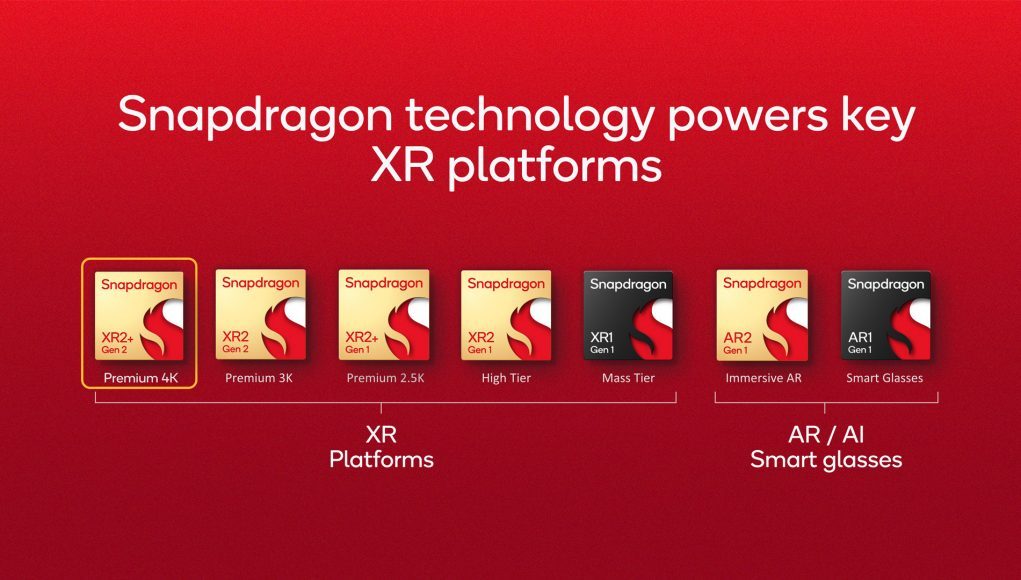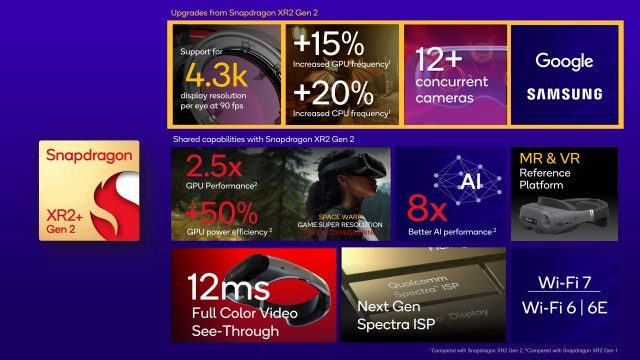Qualcomm today announced its latest Snapdragon XR chip, the XR2+ Gen 2, a more capable variant of the chip that powers Quest 3. The company also hints that it will be used in the upcoming Samsung-Google headset.
Qualcomm is at this point the world’s leading provider of mobile processors for XR headsets. The company’s Snapdragon chips power the vast majority of standalone headsets on the market. So any time the company offers a new an improved chip, it’s a good indicator of what capabilities future XR devices will have.
Today Qualcomm announced Snapdragon XR2+ Gen 2. This is an improved version of the XR2 Gen 2 chip that powers Quest 3.
Compared to XR2 Gen 2, the new chip offers:
- 15% increase in GPU frequency
- 20% increase in CPU frequency
- 12 concurrent cameras (up from 10)
- 18.5MP (4,300 × 4,300) per-eye resolution at 90Hz
While the chip can run at higher frequencies for faster performance, our understanding is that the chip is no more efficient than its predecessor, meaning that higher speeds will require more power and more heat dissipation.
Qualcomm says that five companies are currently building devices based on Snapdragon XR2+ Gen 2, including an upcoming device by Samsung.
This ‘plus’ addition to the company’s XR chip lineup seems like it will be a recurring theme. Quest 2 launched with Snapdragon XR2 Gen 1, but Qualcomm later offered an XR2+ Gen 1 which powered Quest Pro. And later it launched XR2 Gen 2 which is the basis of Quest 3.








